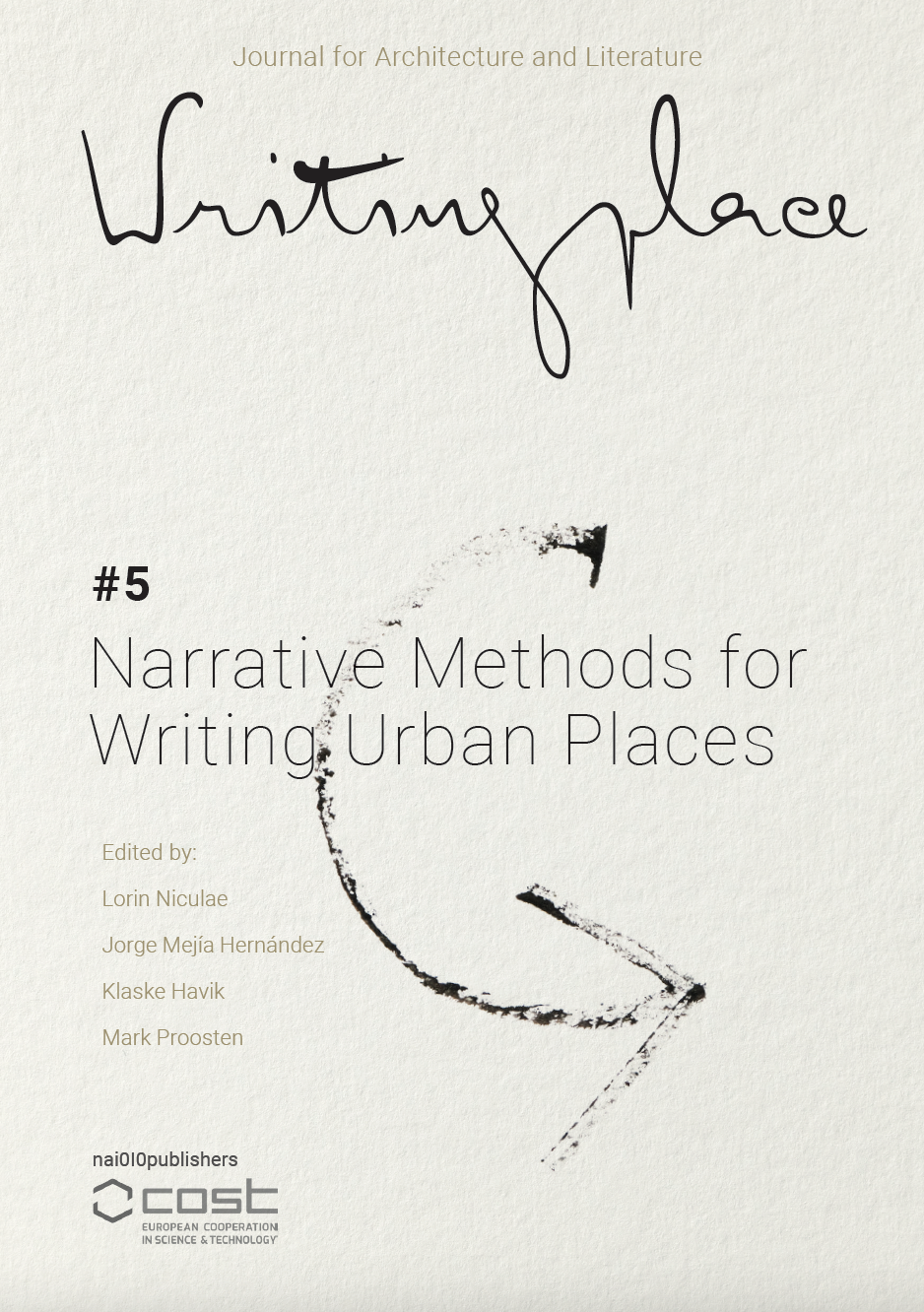Thick Photographic Descriptions
Another Way of Telling Danish Welfare Landscapes
DOI:
https://doi.org/10.7480/writingplace.5.5867Keywords:
welfare landscape, thick description, photography, housing estates.Abstract
This paper explores how ‘nature’ – in the form of the landscapes of two housing estates in Copenhagen – was a central part of the vision of establishing a good life for every citizen: nature was being valued as an essential amenity and common ground for the creation of the new welfare vision for all.
Through an analysis of, and engagement with, historical documents – as well as situated photographic modes of inquiry – this investigation into welfare landscapes focuses on the less-acknowledged but vital forces that shape the green outdoor areas of the housing estates, framing details to emphasize the specificity of place and depicting a landscape for living where humans were central. This way of working can offer insights into multifarious spatial grounds, diverse interpretations of green spaces, and the construction of humane living environments designed for access to nature – but also provide civic opportunities and affordances for gathering, play, community, privacy, personal development and the like – all within these welfare landscapes.
References
The model is based on the idea that everyone has a right to welfare and the possibility of the good life, described in Gøsta Esping-Andersen’s seminal text. Gøsta Esping-Andersen, The Three Worlds of Welfare Capitalism (Cambridge: Polity Press, 1990).
Sven Aakjær, Mogens Lebech and Otto Norn, ‘Yderkvarterernes Bebyggelse’, in: København før og nu (Copenhagen: Hassings Forlag, 1950), 165-166; B5.
Ellen Braae, ‘Welfare Landscapes and Communities’, in: Katrine Lotz et al. (eds.), Forming Welfare (Copenhagen: Arkitektens Forlag, 2017), 47.
Ellen Braae, Asbjørn Jessen, Lærke Keil, Svava Riesto, Henriette Steiner and Anne Tietjen, entitled ‘Reconfiguring Welfare Landscapes’ (Welland) at the University of Copenhagen (2017-2019), https://ign.ku.dk/english/welland/.
Svenn Eske Kristensen, ‘Konkurrencen om Bebyggelse paa Bellahøj’, Arkitekten (1945), 16; Lars Cramer-Petersen, Svend Limkilde and Ole Thomassen, Grøndalskvarteret: Fra Grøndalsvænge til Bellahøj: Byplanlægning og bebyggelse af et københavnsk forstadsområde 1915-50 (Copenhagen: Brønshøj Museum, 1992), 20.
E.V. Jensen and H. Lundgren, ‘Byggegrundsundersøgelserne for punkthusene på Bellahøj’, in: Bellahøjhusbyggeri: Statens Byggeforskiningsinstitut Studie Nr. 15 (Copenhagen: Teknisk Forlag, 1954), 9; Skov- og Naturstyrelsen Miljø- og Energiministeriet, Bydelsatlas Brønshøj-Husum (Copenhagen: Københavns Kommune, 1995).
Gro Lemberg, ‘Dialektik i det fysiske miljø - belyst ved Farum Midtpunkt / Af Kai Lemberg og Gro Lemberg’, Nordisk Psykologi 28 (1976), 130-139; Tyge Arnfred, ‘Farum Midtpunkt’, Fællestegnestuen et Arkitektværksted (Copenhagen: Arkitektens Forlag, 1998), 32; Erik Mortensen, Farum Midtpunkt (Copenhagen: Farums Arkiver & Museer, 1995).
Poul Bæk Pedersen, Arkitektur og plan i den danske velfærdsby 1950-1990 container og urbant raster (Århus: Arkitektskolens Forlag, 2005); Poul Sverrild, Velfærdssamfundets bygninger: Bygningskulturens Dag (Copenhagen: Kulturarvsstyrelsen, 2008).
Sarah Faiks et al., Revisiting Riverside: A Frederik Law Olmsted Community (Ann Arbor: University of Michigan, 2001).
Anne Whiston Spirn, The Language of Landscape (New Haven and London: Yale University Press, 1998), 244, emphasis added.
Clifford Geertz, The Interpretation of Cultures: Selected Essays (New York: Basic Books Inc., 1973).
Hans-Georg Gadamer, Truth and Method (Berkeley and Los Angeles: University of California Press, 1977), 98; Hans-Georg Gadamer, The Relevance of the Beautiful and Other Essays (New York: Cambridge University Press, 1986), 49.
Jeremy Till, ‘Thick Time’, in: Iain Borden and Jane Rendell (eds.), Intersections (London: Routledge, 2000), 156-183.
Ian Borden, ‘Thick Edge: Architectural Boundaries in the Postmodern Metropolis’, in: Iain Borden and Jane Rendell (eds.), Intersections (London: Routledge, 2000), 221-246.
Catherine Dee, ‘Poetic-Critical Drawing in Landscape Architecture’, Topos: Landscape Architecture and Criticism 49 (2004), 58-65.
Thaïsa Way, ‘Landscapes of Industrial Excess: A Thick Sections Approach to Gas Works Park’, Journal of Landscape Architecture 8/1 (2013), 28-39.
A.V. Moudon, ‘Getting to Know the Built Landscape: Typomorphology’, in: K.A. Franck and L.H. Schneekloth (eds.), Ordering Space: Types in Architecture and Design (New York: Van Nostrand Reinhold, 1994), 289-311.
B. Hillier and J. Hanson, The Social Logic of Space (Cambridge: Cambridge University Press, 1984).
Asbjørn Jessen and Anne Tietjen, ‘Reconfiguring Welfare Landscapes: A Spatial Typology’, in: 24th ISUF International Conference- City and Territory in the Globalization Age (Valencia, 2017).
Niels Albertsen and Bülent Diken, ‘Welfare and the City’, Nordisk Arkitekturforskning 2 (2004), 7-22.
Joseph G. Ponterotto, ‘Brief Note on the Origins, Evolution and Meaning of the Qualitative Research Concept Thick Description’, The Qualitative Report 11/3 (2006), 541.
Alison Hirsch (ed.), The Landscape Imagination (New York: Princeton Architectural Press, 2014), 165.
Sherry B. Ortner, ‘Theory in Anthropology Since the Sixties’, Comparative Studies in Society and History 26/1 (1984), 126-166.
Þóra Pétursdóttir and Bjørnar Olsen, ‘Imaging Modern Decay: The Aesthetics of Ruin Photography’, Journal of Contemporary Archaeology 1/1 (2014), 16.
T.J. Clark, The Sight of Death: An Experiment in Art Writing (New Haven and London: Yale University Press, 2006).
Susan Sontag, On Photography (New York: Farrar, Straus and Giroux, 1977), 69.
Frederik Bohrer, Photography and Archaeology (London: Reaktion Books, 2011).
Hans-Georg Gadamer, Truth and Method (Berkeley and Los Angeles: University of California Press, 1977), 98.
Hans-Georg Gadamer, The Relevance of the Beautiful and Other Essays (New York: Cambridge University Press, 1986), 49.
Downloads
Published
How to Cite
Issue
Section
License
Copyright (c) 2021 Kristen Van Haeren

This work is licensed under a Creative Commons Attribution 4.0 International License.



